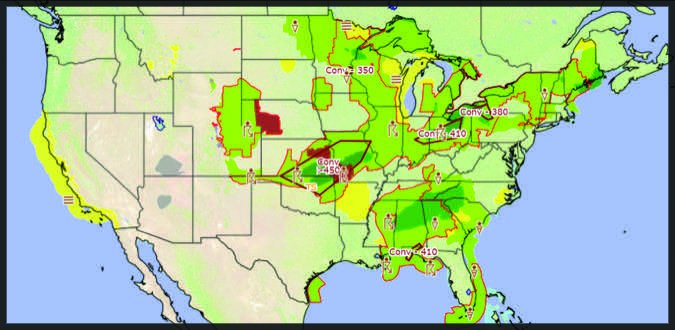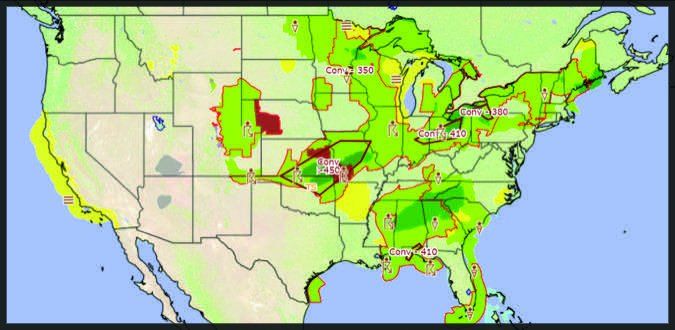Beginning in our December 2015 issue, we shared with readers and explored ongoing efforts at the FAA and the National Weather Service (NWS) to replace the old, familiar text-based area forecast (FA) with a graphics-based product. A follow-up article in our April 2016 issue discussed some of the proposed changes and presented screenshots of the graphical replacement. Now, beginning about the time this issue is in your mailbox, a three-month transition period will begin, ending in October, at which time the text-based FA covering the Continental U.S. (Conus) will be no more.
The final timetable comes via an FAA Notice (NOTC7226), dated June 20, 2017, in which the two agencies announced the transition period will begin July 10, 2017. For three months, the textual Conus FAs will continue to be available. On October 10, 2017, however, the Notice advises their production will cease. Importantly, existing FA products for areas other than the Conus (e.g., Alaska, Hawaii) will continue to be available, at least until further notice. A screenshot of the replacement product is below, zoomed out to depict the entire Conus and configured to depict precipitation and convective weather.
DatedProducts
The change comes, according to the Notice, as the FAA/NWS grapple with modernizing aviation weather products dating from the 1940s, when teletypes were the rage. The two agencies have undertaken a joint review of aviation weather information designed to identify those products and services of limited to utility to aviation, eliminate duplication and emphasize converting to electronic formats. Among the shortcomings identified with the text-based FA are its seemingly arbitrary and unwieldy coverage areas, character limitations imposed by its legacy nature, a prohibition against describing IFR conditions reserved for Sigmets and Airmets, and infrequent update rates.
The FAA/NWS believes the graphical FA (GFA) will be a better solution and eliminating the textual version will allow forecasters to focus on products offering greater benefits to pilots and other end users. Basically, and as the two agencies note, “With few exceptions, the individual weather information elements [of the text-based FA] are available elsewhere in better temporal and/or spatial resolution.”
Remember: The text-based area forecast will be eliminated on October 10, 2017. It will be replaced by the graphical area forecast, an example of which is shown below.





